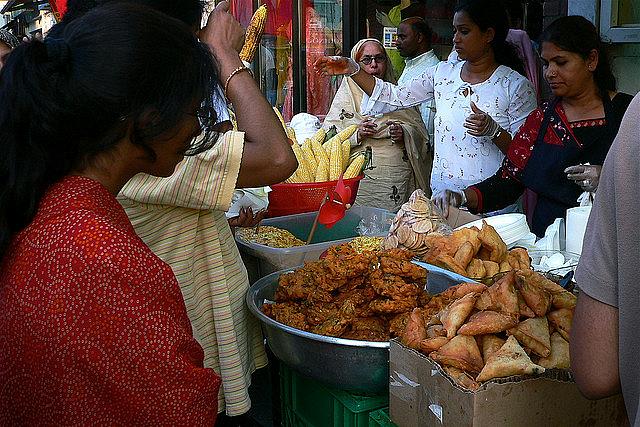Explanatory approach pays off in series on diabetes in Indian community

Indian cuisine is filled with many sugary and carbohydrate-heavy items.
Within minutes of receiving an invitation to apply for the 2015 California Health Journalism Fellowship, the topic I wanted to pitch to the Center for Health Journalism became obvious. You see, I have struggled with diabetes everyday for three years. Diabetes is also an increasingly common disease among Indians, both in India and the United States. Tackling this disease as a journalist seemed to be the perfect pitch and project, especially since I had an ideal outlet, India West, as publication partner.
Learning of my acceptance into the fellowship earlier this year was as exciting as it was daunting. How do I report a fellowship project informing the Indian community of this disease’s impacts without preaching or coming on too strong? What sort of information should I share to make people aware of how diabetes affects us individually, our families, and society at large?
As I reached out to sources and studied the topic, it became apparent that the best way for me to reach my readers was to present diabetes in the simplest manner possible. I interviewed pharmacists, legislators, physicians, researchers, and diabetic patients, asking them practical questions. Any comments or concepts I included in my reporting would be presented in layperson terms, as if the reader were asking questions directly to my sources. My aim was to have any person pick up my report and have as many questions answered as possible.
The importance of making diabetes easy to understand can be summed up by a few telling statistics. As I reported in the first part of my report, a study by a nutritionist projected that 60 million people in India would be diagnosed with diabetes by 2025 – only 10 years from now. About 350 million people worldwide currently have diabetes, according to a World Health Organization report.
I took two approaches to give readers a sense of how dangerous diabetes can be if not managed.
The first approach was to explain how easy it is to be diagnosed with diabetes by regularly eating Indian food. Our cuisine is filled with so many sugary and carbohydrate-heavy items. Linking our cuisine to impactful statistics and studies, I hoped, would grab the reader’s attention.
The second approach was to transition away from statistics and allow my sources to speak. My initial goal was to find several authoritative sources from the state legislature, major hospitals, and high-level researchers. As I reached out to people, I found it was more effective to talk with physicians and medical professionals who deal with diabetes directly. It was even more important to find medical professionals who valued good “bedside manner” — someone who interacts with patients daily with compassion, as opposed to lecturing or commanding patients on how they should move forward.
I reached out to hospitals and attended health fairs to find a few physicians and pharmacists who were a good fit for my report. I quoted one in my report as saying, “Diabetes is not a life sentence.” This was the biggest lesson I learned in my reporting. The healing process can be directly impacted, for better or for worse, depending upon how the disease is presented to the patient. Hearing the doctor say these six words helped me respect the disease and understand that the fight against diabetes is winnable. The quote was used in social media to promote the published report, and I believe it set the tone for my coverage.
Perhaps the biggest lesson I learned came after India West published my report. I discovered many of friends were either diabetic or pre-diabetic. They were struggling to come to terms with the disease. Reading my story and of my struggle helped them better understand their situation. I’ve since connected with at least a dozen friends on a regular basis, using information from my report to help them manage their diabetes.
I also learned diabetics have plenty of help. We just have to know where to go. A few leaders in the Indian community approached me just before I wrote this essay and asked if I can help them organize health fairs where people can come for free and have their blood levels checked. A food manufacturer in the San Francisco Bay Area called me in early November asking me to put him in touch with health professionals who can advise on how to distribute healthier foods to the Indian community. I am working with a dietician who specializes in Indian cuisine to publicize how such food can be enjoyed without causing diabetes (or substantially spiking the blood sugar of those already diagnosed). Several readers called my cell phone and thanked me for shedding light on diabetes. A few told me they started exercise routines and stopped eating late-night dinners because of my report.
My journey in reporting on diabetes is not complete with this fellowship. There is so much more to learn. The battle against diabetes will take a long time to fight, but managing the disease one day at a time can help diminish its impacts. Putting my project together required collaboration and teamwork. The result was an effective and impactful resource for anyone suffering from diabetes. These past few months taught me that one of the most important elements of health management and reporting is to educate people through respect, compassion and teamwork.
Read Parimal Rohit's fellowship stories here.
[Photo by sakura via Flickr.]

